Grab your fresh eggs and let's make over-hard eggs, aka fried eggs with fully cooked yolks. I break down the best pan for cooking, the ideal fat to use, and step-by-step directions.
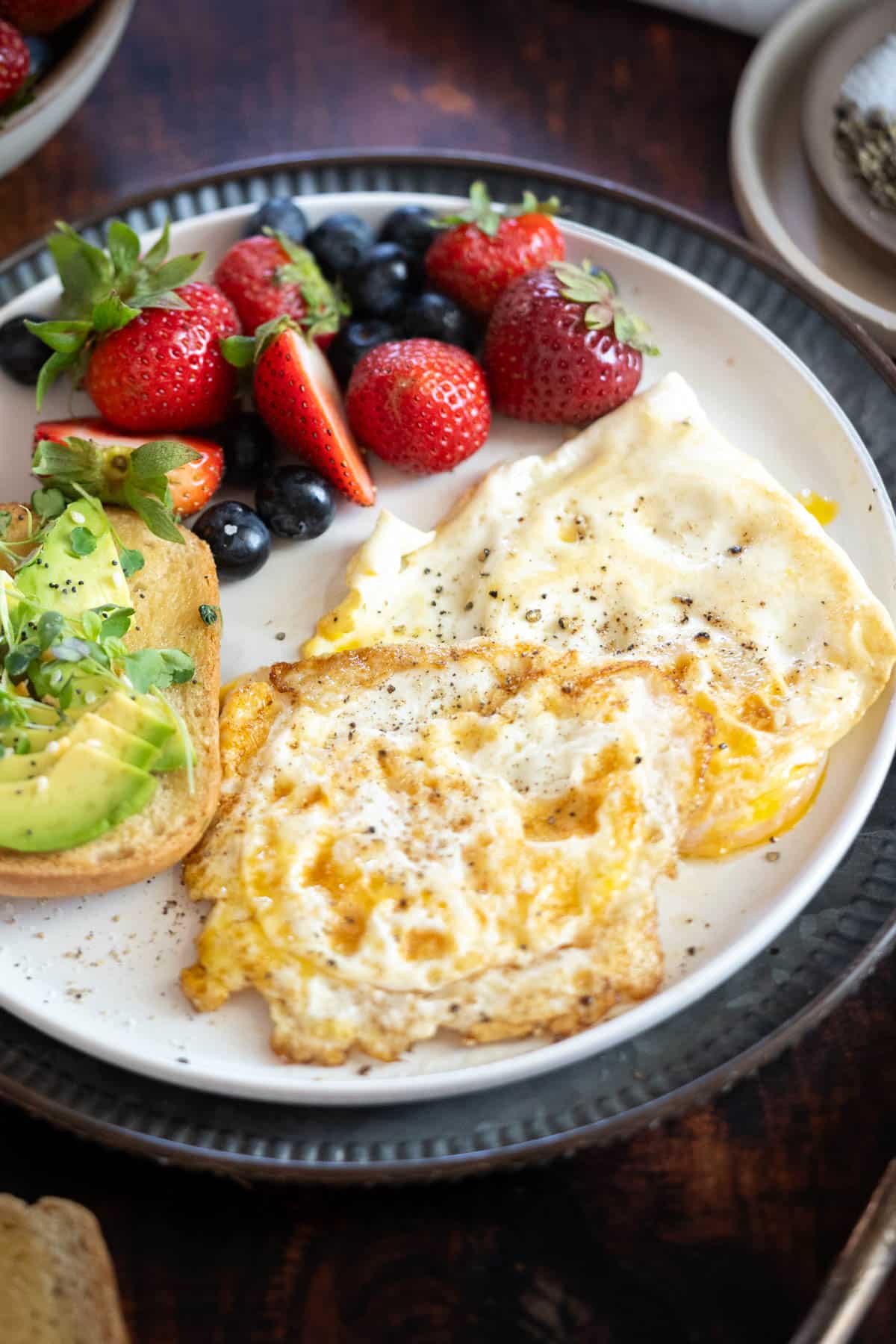
This post may include affiliate links. Please read my disclosure policy.
Another post in my "how to fry eggs" series. Yes, I love all things egg. We all have to start our culinary adventures somewhere so if this is your first time frying an egg, no worries.
I am going to show you how to make perfectly cooked eggs every time!
Eggs are a great source of protein and affordable so be sure to check out all my egg recipes.
Jump to:
What is an Over Hard Egg?
An over-hard egg is a fried egg where the yolk is fully cooked through, leaving no runny or soft center. The yolk may or may not be broken during cooking but will be completely cooked.
Over-hard eggs are the ideal option for you if you prefer eggs with a firm, well-cooked yolk!
🧾Ingredient Notes
The best eggs for fried eggs are the freshest ones possible. Older eggs can be used for baking or scrambled eggs.
What grade eggs for fried eggs?
Choose Grade AA large eggs for frying perfect over easy eggs. Grade A works well for baking or scrambled eggs, where the yolk definition is less critical. I always look for pasture-raised eggs.
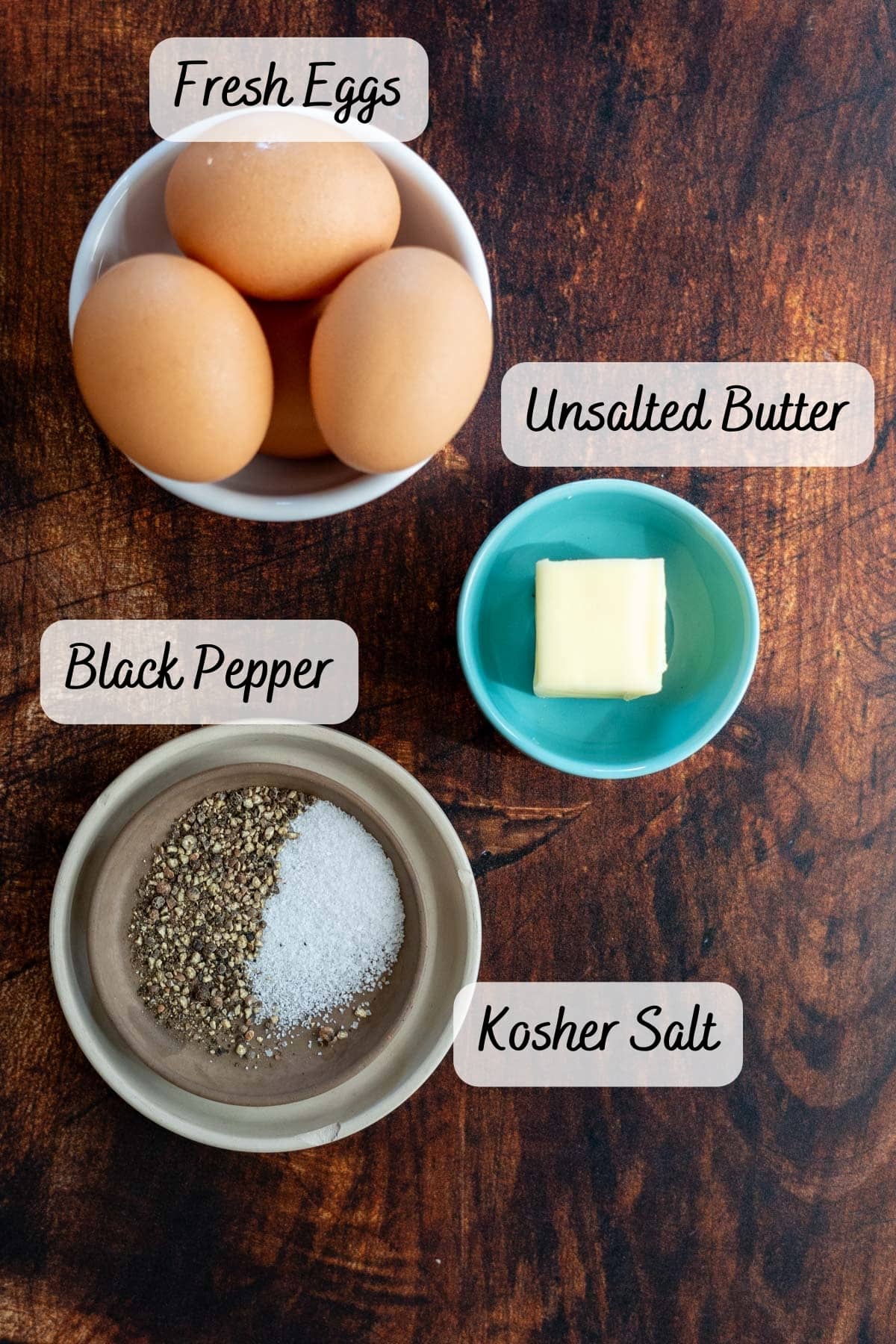
Should You Use Oil, Butter, or Bacon Grease?
For perfect hard eggs, use butter, which browns slightly, adding a rich, nutty flavor and a lovely texture to the egg whites. Butter also has a higher smoke point than olive oil.
Vegans can opt for unsalted vegan butter. Skip salting if using salted butter of any kind.
Alternatively, for extra crispy whites, try olive oil or avocado oil.
Bacon grease is convenient but use it selectively for a more pronounced flavor that complements your breakfast.
🍳Pick the Right Pan
The secret to keeping your eggs from sticking is to use the right pan. I prefer to use a nonstick skillet because it makes flipping eggs a snap. Also, cleanup is simpler.
When using a nonstick pan be sure to use a rubber or plastic spatula to prevent scratching.
A cast-iron skillet can be used, but it needs to be well-seasoned. I typically only use this when I was making bacon and do not want to dirty another dish.
When using cast iron, a fish spatula is an ideal instrument for flipping. Compared to a standard spatula, it is more flexible and won't tear the whites of the egg when you flip.
A stainless steel pan will work, but to obtain the ideal eggs, you might need to add up to twice as much butter.
⏲️How to Make Over Hard Eggs
There are two ways to get a completely cooked yolk. First, you can break the as soon as you add the egg to the pan. This is definitely today if you want the yolk to be more mixed in with the whites.
But my approach is a little more gentle and allows the yolk to firm up whole.
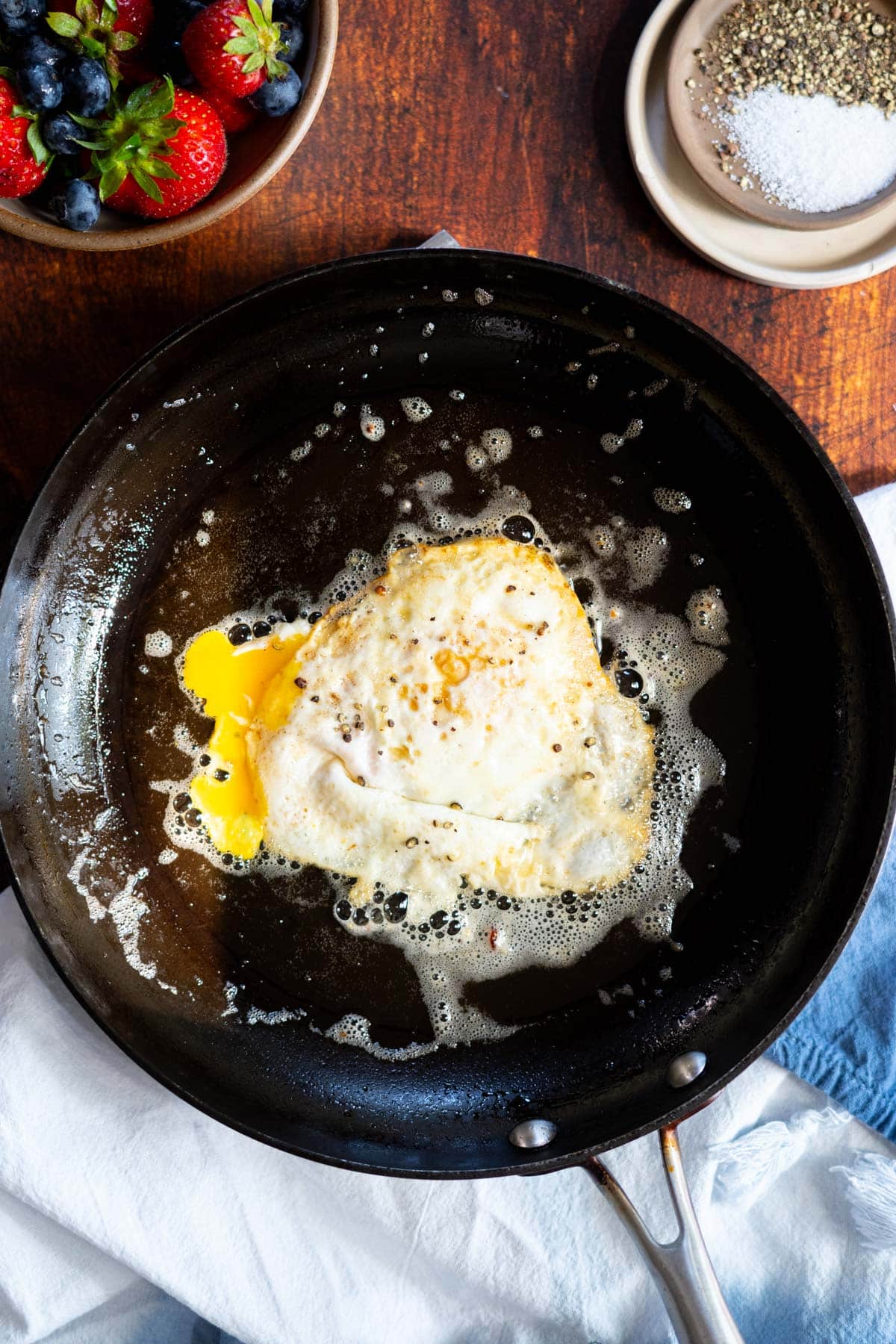
Step 1- Preheat
Warming the butter in a cold pan over medium heat is the first step. Use lots of butter to keep things from sticking. When the melted butter is just beginning to foam, the pan is ready.
It may brown slightly and that is definitely okay!
Step 2- Fry the Eggs
Crack the egg into the pan. Let it be for 2 minutes, resisting any urge to move it around. Season with salt and pepper.
Flip the eggs once the whites of the eggs have set and the edges of the eggs just begin to furl up.
Step 3- Fully Cook the Yolk
Season the second side with salt and pepper. Cook for 2 minutes.
At this point, if the egg yolk hasn't broken, gently press down with your spatula. This will ensure any of the runny yolk comes out and fully cooks.
The bright yellow yolk will lighten up to a soft yellow and your eggs are done!
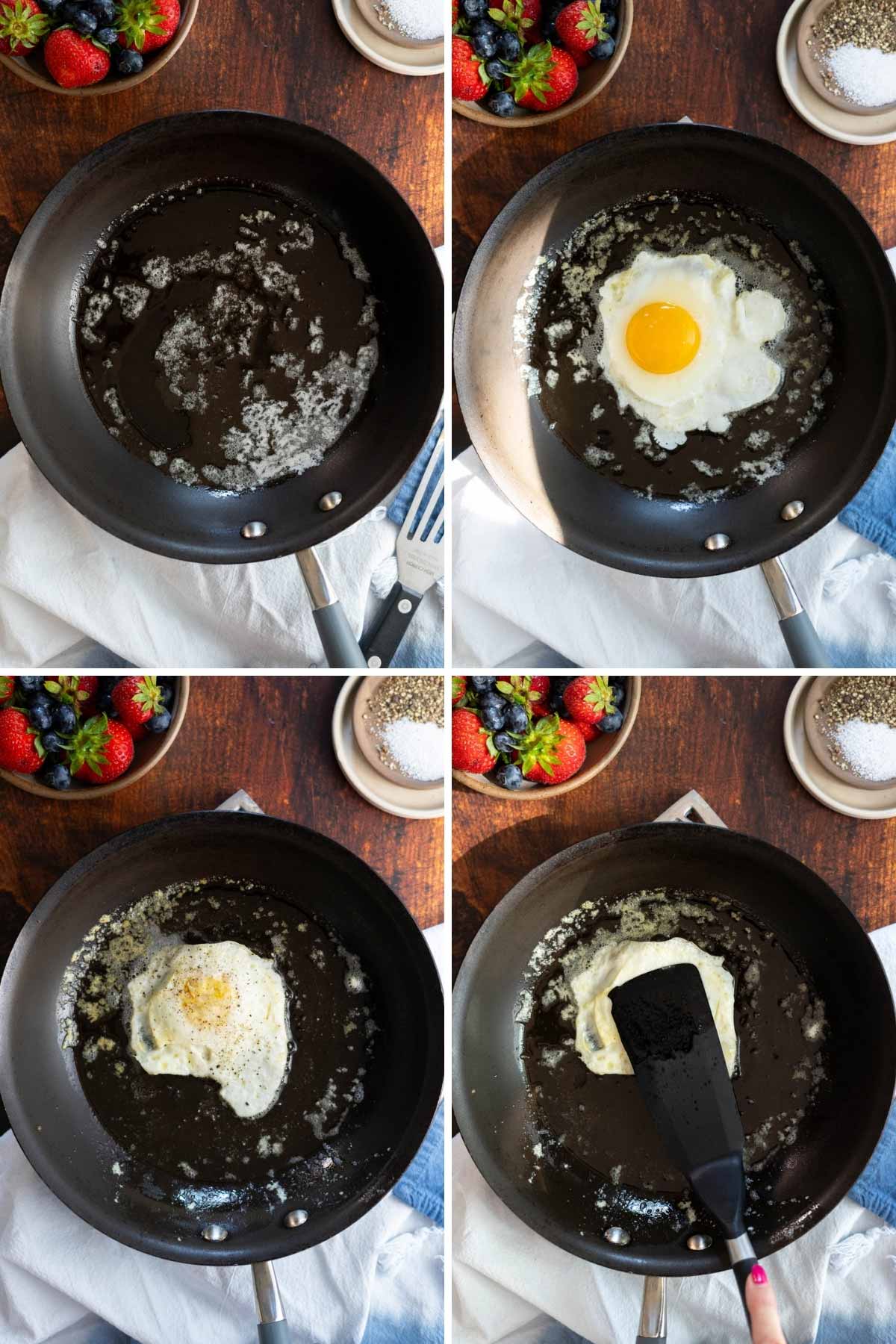
👩🏻🍳 Expert Tips
- Use fresh eggs.
- For beginners, it's best to start with one egg at a time until you get the hang of flipping.
- No skimping on the butter (or bacon fat).
- You have the option to pierce the yolk of the egg or keep it whole but fully cooked.
- For a perfectly cooked over hard egg, cook the eggs a little longer on the second side to ensure the yolk is fully set.
- A firm yolk will be lighter in color, so watch for that!
- If you enjoy the satisfaction of a yolk oozing through your dish, go for over-easy eggs or sunny-side-up eggs instead.
🥗How to Serve Over Hard Eggs
Over-hard eggs are the perfect eggs for a big breakfast with hashbrowns, crispy bacon, and fresh fruit. Or serve with a stack of cornmeal pancakes or oat flour waffles.
Although many people reserve hard eggs solely for breakfast sandwiches. But they actually are great for meal prep because they reheat so easily.
🌡️Storing Leftovers
Store the cooked eggs in an airtight container in the refrigerator and consume them within 2-3 days.
You can reheat fried on the stovetop in a skillet with a little butter. Or simply microwave for 60 to 90 seconds.
More Delcious Breakfast Recipes
Frequently Asked Questions
Over-hard eggs are a type of fried egg. Over-hard eggs are fried longer than the other 3 types of fried eggs, resulting in a fully cooked yolk, while fried eggs are cooked for a shorter time, leaving the yolk runny.
Absolutely! If you prefer dairy-free options, use plant-based or dairy-free butter for frying your over hard eggs. It will still add a delightful richness to your breakfast.
Did You Enjoy Making This Recipe? Please rate this recipe with ⭐⭐⭐⭐⭐ or leave a comment. It helps other wonderful people connect with my food.
📖 Recipe Card
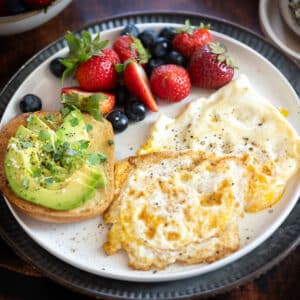
Over Hard Eggs
Ingredients
- 1 Tablespoon unsalted butter or other cooking oil or bacon grease
- 2 eggs
- kosher salt
- black pepper
Instructions
- Heat a non-stick skillet or frying pan over medium-low heat. Add the butter allow it to melt and coat the surface.1 Tablespoon unsalted butter
- When the butter begins to foam, crack the eggs into the pan, no need to crack the yolks. Sprinkle with salt and pepper.2 eggs, kosher salt, black pepper
- Cook for 2 minutes or until the egg whites start to set and become opaque but the yolk is still runny.
- Once the whites are set and the edges begin to crisp, carefully flip each egg using a spatula. Cook for 2 to 3 additional minutes until the egg yolks are firm. Use the spatula to gently press down to ensure the egg yolk has broken and fully cooked through.
Notes
Equipment
- Fish spatula a thin spatula perfect for flipping eggs!


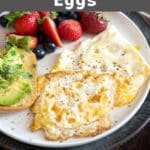


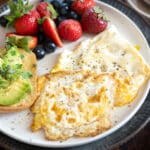
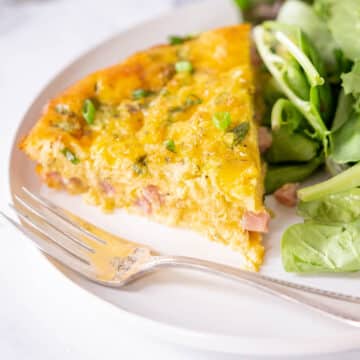
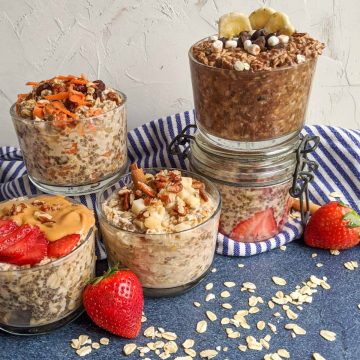
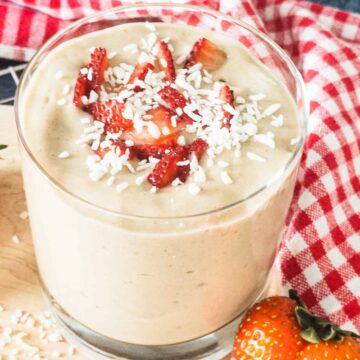
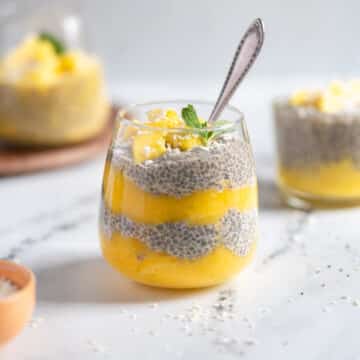
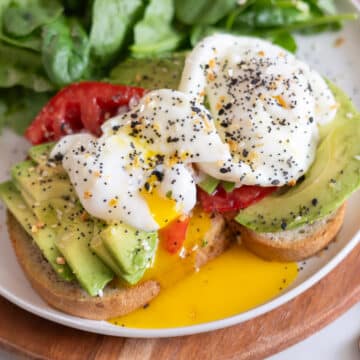
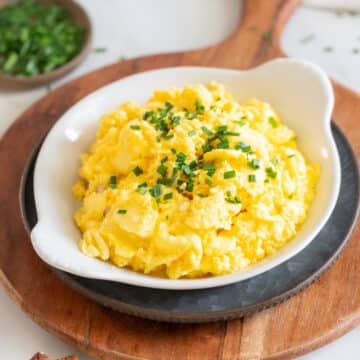
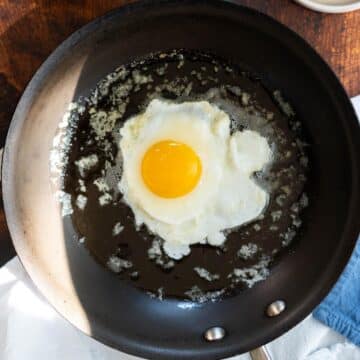
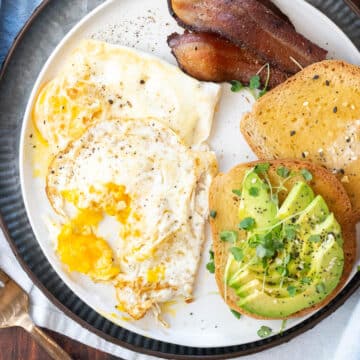
Comments
No Comments